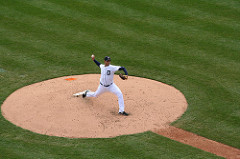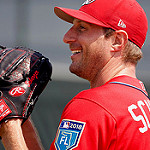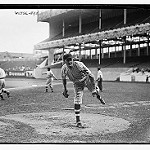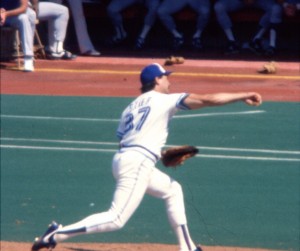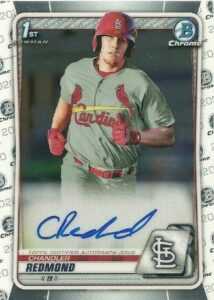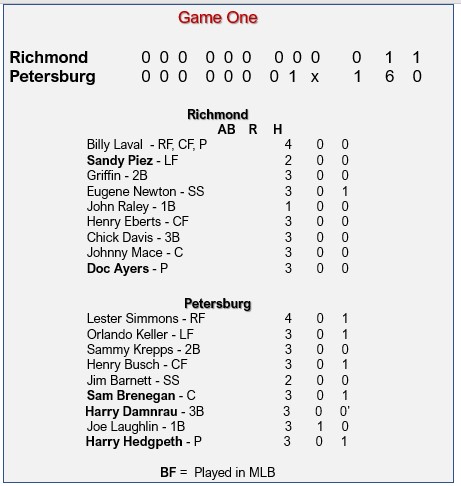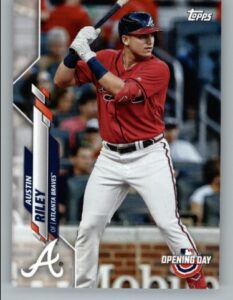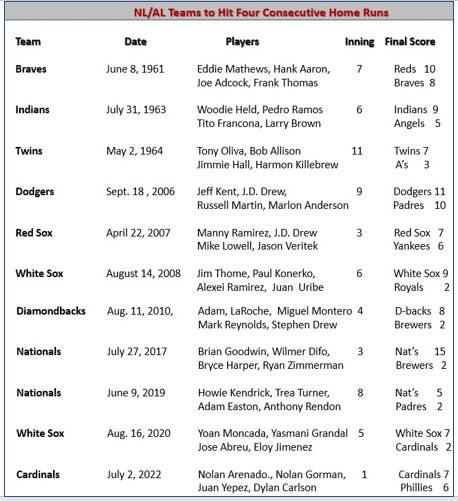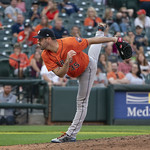GUEST POST
Baseball Roundtable is pleased to present this guest post from Paul Hall, who operates the popular Little Ballparks blog (LittleBallparks.com); covering diverse baseball and softball topics – ranging from “Why do Baseball Games Start at Odd times?” to “Best Baseball Board Games” to “Best Baseball Radar Guns” (and a lots of topics in between). If you want something that may spark a little debate, you might try “The Most Important Position in Baseball,” in which Hall share his view on baseball’s most and least important positions. Here’s a link to that post.
In this guest post, Hall looks at his favorite Walk-Up/Walk-In songs.
——————————————————-
My Favorite baseball Walk-Up Songs
Guest Post
By Paul Hall
Enter Sandman – Metallica

Photo by Keith Allison 
My mind is so infected with baseball that, more often than not, the first association when hearing some song is the player who uses it as a walk-up song.
Among all those songs and players, no mental connection is stronger than the one between Metallica’s Enter Sandman and Yankees’ icon Mariano Rivera.
It’s come to the point that it’s impossible for me to hear that long-building Kirk Hammet guitar intro and not picture Rivera coming out the bullpen and slowly jogging towards the mound.
I had the good fortune to attend a couple of Yankees games in the early days and witness the crowd go crazy for Rivera. To this day, the old Yankee Stadium, as Mariano came in to the intro of Enter Sandman, is for sure the loudest place I’ve ever been. Surely louder than any rock concert.
At these moments, it was hard not to feel for the opposing batters. It’s not enough that you have to face probably the best closer ever, but he comes out to the field accompanied by one of the most menacing songs ever.
Big Poppa – The Notorious B.I.G
Big Poppa is hugely popular and used as a walk-up song by a number of players. However, this is another number that will forever in my mind be connected with just one player.
Moreover, because of that player, it’s a walk-up song that’s particularly near and dear to my heart. “Big Papi” David Ortiz is one of my favorite players ever, even though I’m the farthest a man can be from a Red Sox fan.
He just had something special about him and the swagger he played and carried himself with made this classic rap banger a perfect fit for his character.
The slow and groovy jam seemed to perfectly capture the essence of Ortiz as a player and as a public persona.
Other players, even some rather prominent ones such as CC Sabathia, also used this song as they walked up on the field. Still, I feel that none of them managed to own it in the way Big Papi did.
Can’t Stop – Red Hot Chili Peppers
 As a boy ( and as an adult, to be honest), I used to spend countless hours dreaming about playing in the MLB. A fair share of that daydreaming went to thinking about what would be my walk-up song if I ever got a chance to step onto the Major-League field. I considered literally hundreds of songs, but it always came down to the same one – Can’t Stop by the Red Hot Chili Peppers.
As a boy ( and as an adult, to be honest), I used to spend countless hours dreaming about playing in the MLB. A fair share of that daydreaming went to thinking about what would be my walk-up song if I ever got a chance to step onto the Major-League field. I considered literally hundreds of songs, but it always came down to the same one – Can’t Stop by the Red Hot Chili Peppers.
It’s one of my favorite songs by one of my favorite bands and it has everything a good walk-up song should have. The song checks all the boxes – upbeat intro, rhythm bursting with energy, immaculate vibe, catchy melody, and inspiring lyrics.
Plus, it’s played by probably some of the coolest dudes on the planet. So, it’s no wonder that plenty of players, including All-Stars such as Anthony Rizzo, love to have Can’t Stop blasting through the loudest baseball speakers as they enter the game.
Careless Whisper – Wham

Photo: Keith Allison from Hanover, MD, USA, CC BY-SA 2.0 <https://creativecommons.org/licenses/by-sa/2.0>, via Wikimedia Commons
I’ve always loved players who didn’t take themselves too seriously. Players who knew how to have fun, and made jokes at their own expense. And, what better way to prove you’re all this than choosing one of the corniest songs ever as your walk-up song?
The 80s classic, Careless Whisper, is in many ways, the opposite of what a walk-up song should be. With its sensual saxophone intro, slow-dance atmosphere, and romantic lyricist, the song would be better fitting for a beauty pageant or a cheesy nightclub than a baseball field.
Still, some players, such as Josh Reddick, embraced the irony and managed to make it one of the greatest walk-up songs ever. It even came to the point that fans began carrying their own prop saxophones to the games.
However, despite all of the above, I feel that there’s another perspective to this.
When a player chooses Careless Whisper, in my eyes, he’s a total bad-ass who doesn’t care about looking cool and his only worry is how to annihilate the opponents.
Halloween Theme – John Carpenter

Photo: Johnmaxmena2, CC BY-SA 4.0 <https://creativecommons.org/licenses/by-sa/4.0>, via Wikimedia Commons
One of the things I enjoy the most is when baseball goes beyond the boundaries of sport and intersects with popular culture. Choosing a movie theme as your walk-up song certainly falls into this category. These songs don’t just draw from the sound, but also have another layer of meaning that’s familiar to every movie buff.
Obviously, Mike Mayers, a former Cardinals’ (current Angels) pitcher, didn’t have to think too hard when choosing his walk-up song. (Those of you familiar with the Halloween movie franchise movie villain will recognize that Mayers only had to add a vowel.)
He may not have reached the star level of others in this post, but Mayers certainly has a “household” name and his choice of walk-in music readily leans into the notoriety of his namesake from the Halloween franchise.
Now, Mayers has not reached the level of intimation attributed to many of today’s relievers. Nevertheless, I certainly wouldn’t want to be in the batter’s shoes when he comes out of the bullpen to the sound that used to announce the arrival of one of the scariest villains in movie history.
God’s Gonna Cut You Down – Johnny Cash
Although I’m all for peace and love on the baseball field, I love when things get a little dark. Without it, it’s difficult to achieve the much-needed intimidation factor of the walk-up song. Besides pumping up the player and the crowd, the song should also send chills down the spines of opposing players. That’s probably why pitchers like Cody Allen and Drew Storen (among others) have taken the mound to this Cash tune.
And, it’s hard to think of anyone better for sending a chill down the spine than the Man in Black himself. Hearing Johnny Cash’s harrowing lyrics, accompanied by the dark country twang and stomp-clap beat, is enough to creep me out even when I’m sitting safely at home.
I can only imagine how intimidated the players may feel when they hear the words “You can run on for a long time/Sooner or later God’ll cut you down” as their opponent steps onto the field.
——————————–
About Post Author Paul Hall
 Throughout his whole life, Paul Hall has been, in one way or the other, involved in baseball.
Throughout his whole life, Paul Hall has been, in one way or the other, involved in baseball.
Growing up in a baseball-obsessed family, he caught the bug early from his father and spent countless hours playing and watching the game, dreaming of making it big. Even though his playing career ended in high school, Paul never veered too far from the baseball field.
Over the last 25 or so years, he has traveled the country, trying to visit as many ballparks as possible and talk baseball with fellow enthusiasts.
Paul even managed to combine baseball with his other passion, writing, and runs a blog at littleballparks.com, providing a helpful resource for everyone looking for useful and actionable information about the game.
The blog covers a wide range of topics, including how-to guides, explanations of niche baseball slang, recommendations for the best baseball gear, and fun trivia articles.
Recent posts include diverse subjects such as Why Do Baseball Players Wear Arm Sleeves, USA vs USSSA Bats, How Much Does A Baseball Weigh, and How Much Money Does A Baseball Stadium Make Per Game.
Baseball Roundtable Q&A with Paul Hall
Q: Why did you decide to start a baseball blog?
A: In my group of friends, I was always known as “the baseball guy.” Any time anyone had a question about baseball, they would turn to me for an answer, as they knew I was a living encyclopedia of weird baseball facts and obscure game rules.
As much as I love talking about baseball and as much as I love my friends, this can get tiring after a while.
So, I decided to create a one-stop spot for everyone who might have similar questions and gather all my knowledge in one place.
Q: What positions did you play in Little League and High School?
A: Initially, I roamed around and played every position except the catcher.
However, as I grew older, I got rather tall, so the coach would usually put me on first base. I remained at first base throughout high school, when my competitive baseball career ended. I like to think that it was due to the incompetence of college scouts, but it probably had more to do with the lack of talent.
Q: How many ballparks have you been to?
A: By my account, I have visited 17 MLB ballparks and almost 60 Minor-League fields.
Of course, some of them are no longer in use, and it makes me happy that I was able to make my pilgrimage there while they were still active.
The first stadium I visited and the site of the first ballgame I saw in person was the old Tiger Stadium in Detroit. My father took me to the Opening Day of the 1985 season, and we watched the Tigers beat the Indians.
I don’t remember much from the game except how enamored I was with the atmosphere, and that the pitcher for the Tigers was my childhood hero and still one of my favorite players ever, Jack Morris.
Out of current MLB stadiums, I would like to visit the “new” ballpark in Atlanta and the Marlins’ stadium in Miami next.
 Baseball Roundtable is on the Feedspot list of the Top 100 Baseball Blogs. To see the full list, click here.
Baseball Roundtable is on the Feedspot list of the Top 100 Baseball Blogs. To see the full list, click here.
I tweet baseball @DavidBaseballRT
Follow/Like Baseball Roundtable’s Facebook Page here. More baseball commentary; blog post notifications; PRIZES.
Member: Society for American Baseball Research (SABR); The Baseball Reliquary; The Negro Leagues Baseball Museum.
Baseball Roundtable, blogging baseball since 2012.


